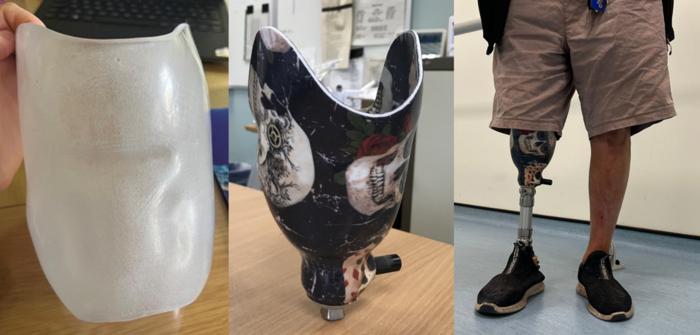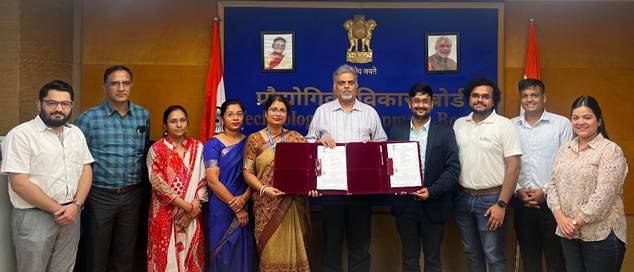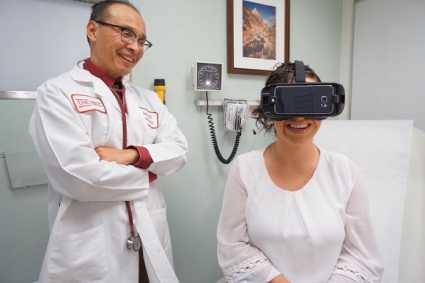Here are some of the top medical technology innovations that have made a significant social impact, addressing critical healthcare challenges and improving patient outcomes:
- Lenacapavir for HIV Prevention
– Innovation: A long-acting injectable drug requiring only two shots per year for HIV prevention.
– Impact: This breakthrough has shown unprecedented success in clinical trials, nearly eliminating new infections among high-risk groups. It addresses challenges like stigma and access barriers, offering hope in the global fight against HIV.
- Non-Invasive Platform for Stillbirth Prevention
– Innovation: A blood test using miRNA biomarkers to detect risks of small-for-gestational-age (SGA) births.
– Impact: Developed by Imperial College London, this test integrates seamlessly into prenatal care, enabling early detection and intervention. It significantly reduces stillbirth rates and improves neonatal outcomes.
- CAR T-Cell Therapy for Brain Cancer
– Innovation: A reengineered immune cell therapy targeting glioblastoma, an aggressive brain cancer.
– Impact: This therapy has shown promising results in pediatric and adult patients, offering new hope for a condition previously considered a death sentence. It represents a major advancement in cancer treatment.
- Gene Therapy for Inherited Hearing Loss
– Innovation: A dual-vector gene therapy targeting the OTOF gene to restore hearing in profoundly deaf children.
– Impact: This groundbreaking treatment has allowed children to hear for the first time, demonstrating the potential of gene therapy to address genetic disorders.
- 3D-Printed Windpipe Transplant
– Innovation: The first successful 3D-printed windpipe transplant using patient-specific designs.
– Impact: This milestone highlights the potential of 3D printing to address organ shortages and personalize treatments, marking a new frontier in regenerative medicine.
- AI-Driven 3D Printing for Neuroscience
– Innovation: High-resolution 3D-printed brain models created using AI for neurosurgical planning and research.
– Impact: These models improve diagnostic accuracy and accelerate neuroscience research, offering new insights into brain anatomy and disease.
- Dexcom Stelo: Over-the-Counter Continuous Glucose Monitor (CGM)
– Innovation: The first FDA-cleared over-the-counter CGM for non-insulin users.
– Impact: This device provides real-time glucose monitoring without the need for prescriptions, empowering millions of diabetes patients to manage their condition more effectively.
- Enzyme-Based Treatment for Chronic Wounds
– Innovation: An enzyme-based solution targeting biofilm-associated infections in chronic wounds.
– Impact: Developed by Texas Tech University, this treatment enhances antibiotic efficacy, reduces healing time, and addresses antibiotic resistance, benefiting millions with chronic wounds.
- BiVacor Artificial Heart
– Innovation: The first human implantation of the BiVacor artificial heart.
– Impact: This device offers a life-saving solution for patients with end-stage heart failure, showcasing advancements in artificial organ technology.
- AI-Powered Autism Diagnosis System
– Innovation: EarliTec’s EarliPoint system uses AI and eye-tracking technology for early autism diagnosis in children.
– Impact: This tool enables earlier and more accurate diagnosis, improving intervention outcomes for children with autism.
- AI-Powered Stroke Detection and Treatment
– Innovation: AI algorithms integrated into imaging systems to rapidly detect strokes and recommend treatment pathways.
– Impact: This technology reduces diagnosis time, improves treatment accuracy, and saves lives by enabling faster intervention during critical moments.
- Smart Contact Lenses for Glaucoma Monitoring
– Innovation: Contact lenses embedded with sensors to continuously monitor intraocular pressure in glaucoma patients.
– Impact: These lenses provide real-time data, allowing for better disease management and reducing the risk of vision loss.
- Portable MRI Machines
– Innovation: Compact, low-cost MRI machines designed for use in remote or underserved areas.
– Impact: This innovation democratizes access to advanced diagnostic tools, particularly in rural and low-resource settings, improving early detection of neurological and other conditions.
- Wearable ECG Patches for Long-Term Monitoring
– Innovation: Disposable, adhesive ECG patches that monitor heart activity for weeks at a time.
– Impact: These patches enable early detection of arrhythmias and other cardiac issues, reducing hospitalizations and improving outcomes for patients with heart conditions.
- AI-Driven Mental Health Chatbots
– Innovation: AI-powered chatbots providing mental health support and therapy, such as Woebot and Wysa.
– Impact: These tools offer accessible, affordable mental health care, addressing the growing demand for psychological support and reducing stigma around seeking help.
- CRISPR-Based Treatments for Sickle Cell Anemia
– Innovation: CRISPR gene-editing therapies targeting the genetic mutations causing sickle cell anemia.
– Impact: This treatment offers a potential cure for a debilitating condition that disproportionately affects marginalized communities, significantly improving quality of life.
- Telemedicine Robots for Remote Surgery
– Innovation: Robotic systems enabling surgeons to perform procedures remotely via telemedicine.
– Impact: This technology expands access to specialized surgical care in underserved areas, reducing disparities in healthcare access.
- Smart Inhalers for Asthma and COPD
– Innovation: Inhalers equipped with sensors to track usage and provide feedback to patients and doctors.
– Impact: These devices improve medication adherence and disease management, reducing hospitalizations and improving quality of life for patients with respiratory conditions.
- AI-Powered Drug Discovery Platforms
– Innovation: Platforms like Atomwise and Insilico Medicine use AI to accelerate drug discovery and development.
– Impact: These systems reduce the time and cost of bringing new drugs to market, addressing unmet medical needs and improving access to life-saving treatments.
- Virtual Reality (VR) for Pain Management
– Innovation: VR systems used to distract patients during painful procedures or chronic pain management.
– Impact: This non-pharmacological approach reduces reliance on opioids and improves patient comfort, particularly in pediatric and post-surgical care.
- Biosensors for Early Sepsis Detection
– Innovation: Wearable biosensors that detect early signs of sepsis through biomarkers in sweat or blood.
– Impact: Early detection saves lives by enabling timely intervention, particularly in ICU and post-operative settings.
- AI-Enhanced Prosthetics
– Innovation: Prosthetic limbs with AI-driven adaptive learning capabilities for more natural movement.
– Impact: These prosthetics improve mobility and quality of life for amputees, offering greater independence and functionality.
- Smart Pill for Medication Adherence
– Innovation: A pill embedded with a sensor that tracks ingestion and sends data to a smartphone app.
– Impact: This technology improves adherence to medication regimens, particularly for chronic conditions like hypertension and diabetes, reducing complications and healthcare costs.
- AI-Powered Radiology Assistants
– Innovation: AI systems that assist radiologists in analyzing imaging data for faster and more accurate diagnoses.
– Impact: These tools reduce diagnostic errors, speed up treatment decisions, and alleviate the workload on healthcare professionals.
- Personalized Cancer Vaccines
– Innovation: Vaccines tailored to an individual’s tumor profile, developed using mRNA technology.
– Impact: These vaccines offer a promising new approach to cancer treatment, improving survival rates and reducing the side effects of traditional therapies.
These innovations highlight the transformative power of medical technology in addressing global health challenges, improving access to care, and enhancing patient outcomes.







